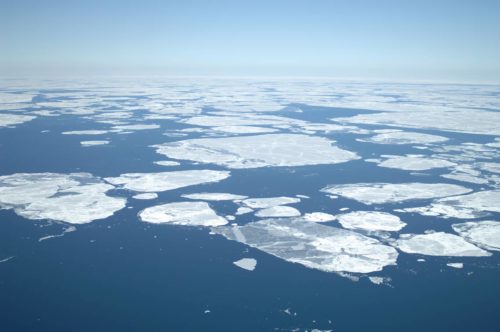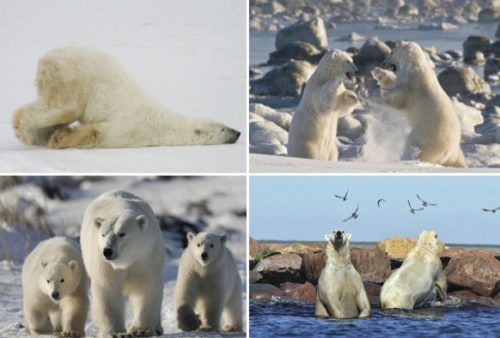Getting Up Close with Polar Bears — While We Still Can
“Hello, beautiful,” the guide says, in the gentlest tone, to the polar bear lumbering toward us. We’d been watching her feed on berry-laden bushes on the muddy shores of Hudson Bay for about 20 minutes before she noticed us and headed over to investigate her audience — a dozen people from all over the world standing awestruck in matching red Gore-Tex jackets.
“What’cha doing sweetie?” he tries again as the bear keeps coming, slowly, cautiously.
Our three guides have handfuls of rocks in their hands and rifles slung over their shoulders. But the weapon they use today and most days is sound. At about 40 yards, one of the guides bangs a rock against our metal buggy and the bear jumps back, startled. She veers right and saunters away, looking over her massive shoulder to give us a final backward glance.
“Polar bears are like grizzly bears on Valium, they’re just so calm most of the time. But that doesn’t mean they can’t have a bad day.”
“From a predictability perspective, polar bears are like grizzly bears on Valium, they’re just so calm most of the time,” says Andrew Derocher, a University of Alberta professor who has been studying the bears for 35 years. “But it doesn’t mean they can’t have a bad day or bad interaction or just change their behavior. And that’s always the unknown.”
The female we’d been watching is one of about 800 bears that come to the western shores of Hudson Bay when the sea ice melts around June and July. They pass the warmer months lounging around, conserving energy, and waiting for the ice to come back in November. When it does, the bears climb back on and spend the winter moving over the frozen bay and gorging on seals.
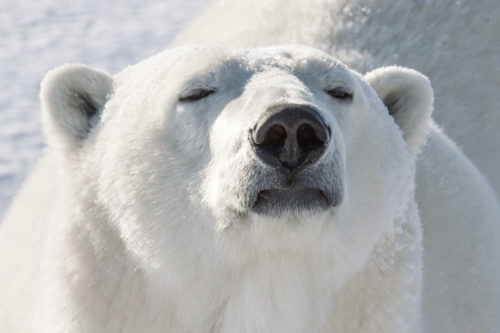
Thousands of tourists come to northern Manitoba every year to see the bears on the shoreline. The bear-watching industry started in the town of Churchill in the 1980s, when a few American journalists showed up and asked locals to drive them to the town dump to see what were then regarded as “giant white rats” scavenge in the garbage. After stories started appearing in glossy magazines, locals upped their game to accommodate the surge of tourists flocking to town. Today, one can take day trips in specially outfitted giant trucks called Tundra Buggies, or spend a week among the bears onboard a mobile hotel room, or fly into comfortable, remote lodges. The bears, meanwhile, have a new nickname: the poster children of climate change.
The bear population in Hudson Bay has been declining — as much as 18 percent from 2011 to 2016. “All indications are that Hudson Bay is not going to have polar bears in 20 or 30 years,” says Derocher. “There are so many things changing in the Arctic right now, it’s hard to predict how bears will respond. Going forward in time, changing sea ice, changing environmental conditions, competition — it’s not going to be the same as it has been in the past.”
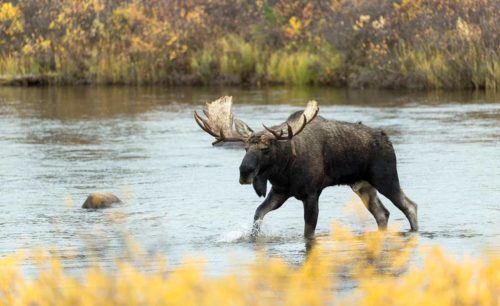
Getting There
It’s an hour-long flight from Churchill south to Churchill Wild’s Nanuk Polar Bear Lodge where we are staying, and along the way, we see a dozen or more bears lounging on the vast beaches below. Our pilot flies along the shoreline, pointing out the white blobs on the mud until we start spotting them ourselves. We land on a dirt strip on the other side of the lodge’s electric fence, where a few members of the local wolf pack sprawl out in the September sun. As our bags are unloaded, we see a black bear walk into the nearby brush. Business as usual in the wilds of Canada’s sub-Arctic.
Over the next few days, we put on our loaner red coats, pull mud-splattered blankets over our laps, and head out in open ATV buggies to look for bears, watch the wolves, and stand in the woods calling moose. Our Cree guide, Albert “Butch” Saunders, has been hunting, fishing, and trapping around Hudson Bay his entire life. He watches tracks to see where the moose might be, and when our buggies pull over, he pulls a string through a coffee canister, creating a wail that mimics the sound of a female moose. Another guide, Josh Robson, sways and dips in the long grass to impersonate a female moose. Eventually the song and dance works, and a massive bull moose emerges in the autumn mist. He doesn’t stick around long once he realizes the deception. Rather, there’s just Saunders with a big grin and a bunch of delighted people snapping pictures. Another day, as the buggies come over a crest of a hill, we see six moose running full out in the distance. More delight.
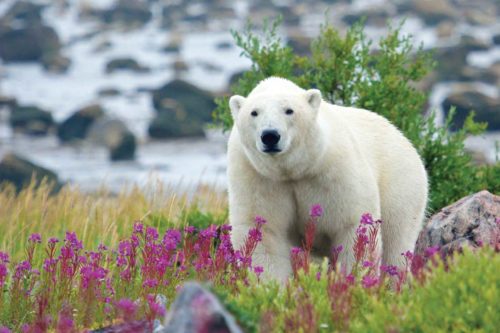
Back at the lodge, we watch wolf cubs frolic in the fall foliage through picture windows. Several scopes are set up for those who want a closer look. A week earlier, guides and guests watched through the scopes as a mama bear, her two cubs glued to her side, fended off a wolf pack. “It was terrible,” says guide Andy MacPherson of the 30-minute attack. “But I couldn’t look away.” Many wolves in this area starve to death, and taking down a polar bear would be a feast for the pack of 18. The wolves went for the bear’s neck, but she managed to fling them off and get away with her cubs. The day after we hear the tale of the fight, we see a beautiful black wolf with yellow eyes and gashes along its side. He’s in rough shape and lies down to rest under a tree, watching us watch him. I ask MacPherson which animals he was rooting for during the fight. He just shakes his head: “Nature chooses,” he says.
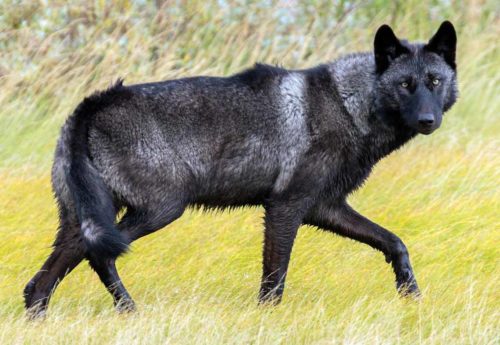
The Rules
When we’re outside the lodge’s electric fence, we have strict instructions: Be quiet. Stay close to the buggy. Do what you’re told. The guides use a careful system of deterrents to keep us and the bears safe. It starts with talking to the animals and progresses to startling them with clanging rocks or loud bangers. The rifles remain on the guides’ shoulders. “If I ever had to shoot a polar bear, I’d quit the business,” MacPherson tells me. He’s worked around bears for decades, studying how our behavior affects theirs. “Every time bears are seeing people, they’re learning, and they’re going to react differently in the future depending on what kind of interaction that was,” he says. “A negative interaction would be feeding animals — they’re going to come back. A positive interaction could be they come up and there’s no reward so you end up becoming part of the background.”
“All indications are that Hudson Bay is not going to have polar bears in 20 or 30 years.”
We climb into the buggies and travel about five miles to find a mother and her cub snuggling together on the mud. After about 20 minutes of watching them, the cub, curious, gets up and starts toward us. Mama dutifully follows. Guides MacPherson and Robson stand in front of us, rocks in hand. “Hey there, little guy — how’s it going?” MacPherson says. At the sound of his voice, the bears stop in their tracks. Eventually the cub, his fur gray with mud, gets bored of the sub-Arctic standoff and sits down. Mama bear stays up, lifting her snout to catch our scent 40 yards away. Meanwhile, Saunders stands with his broad back to all of us, scanning the horizon behind us with his binoculars.
“Time to go” MacPherson says, and we climb back in the buggies. As we drive off to the safety and comfort of the lodge, mama bear turns her head and watches us leave. I turn my head too, keeping my eyes on the polar bears as we get farther away and mother and cub turn into dots on the gray horizon, and then nothing at all.
Jennifer Allford is a freelance writer in Calgary, Canada. She writes a monthly lifestyle column in the Calgary Herald and has contributed travel stories to a number of publications, including the Toronto Star, WestJet Magazine, and Travel + Leisure. For more, visit jenniferallford.com.
This article is an expanded version of the interview that appears in the September/October 2018 issue of The Saturday Evening Post. Subscribe to the magazine for more art, inspiring stories, fiction, humor, and features from our archives.
Post Travels: Summer in the Polar Bear Capital of the World
Churchill, Manitoba is a small place. One gas station, one supermarket, and though there a handful of stop signs, you won’t find a traffic light. Polar bears outnumber the 900 or so people that call this accessible stretch of the Arctic home, and every summer, thousands of beluga whales flood into Hudson Bay. Mother Nature runs the show in Churchill, but those who visit often find themselves with a front row seat to a place like nowhere else in the world. (All photos courtesy of Dana Rebmann.)
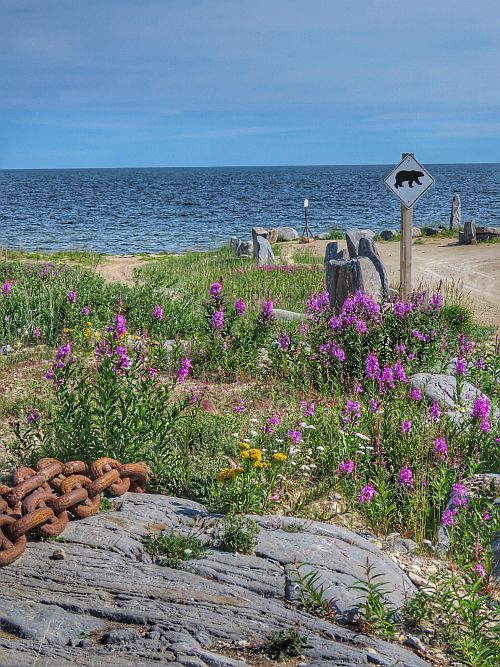
Although sightings are not as common during summer, it’s always polar bear season in Churchill.
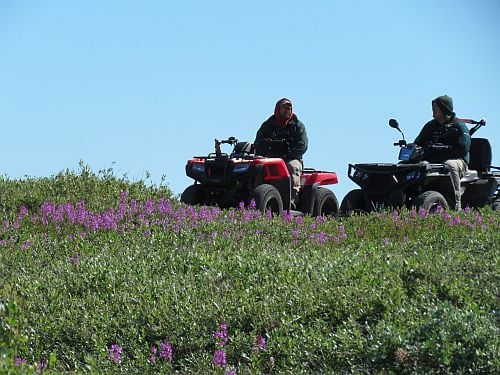
Guards on polar bear lookout at Prince of Wales Fort National Historic Site. It’s amazing how many good hiding places there are in Churchill, even for big, furry bears.
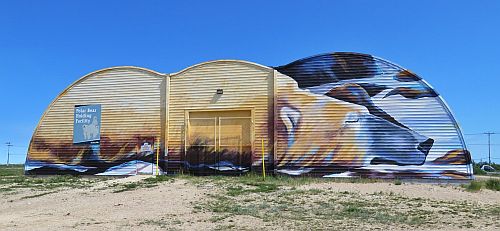
Churchill boasts what’s said to be the only polar bear jail in the world. It can hold 28 bears — more if mothers brought their cubs to town.
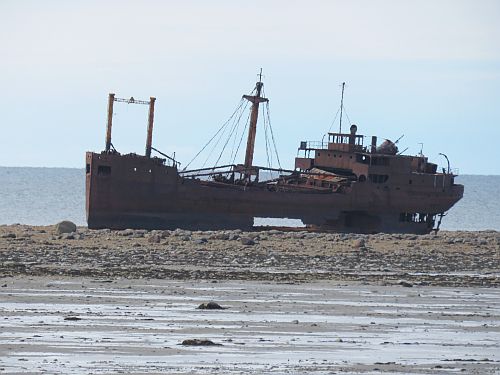
There are many stories surrounding its fate, but a look at the shipwrecked MV Ithaca is a scenic stop in between bear spotting activities.
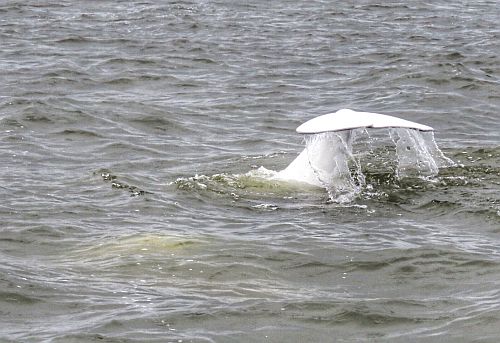
Most visitors come to see the polar bears, but beluga whales know how to steal the show. And it’s not unheard of for whale watching tours to spot bears wandering along the shoreline.
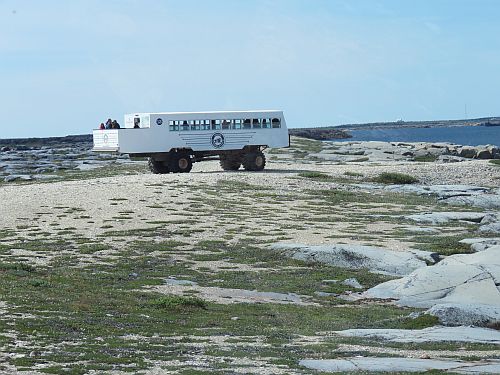
Tundra Buggy all-terrain vehicles roam the trail network in the Churchill Wildlife Management Area (WMA). The back deck, or “patio” can be used anytime the Tundra Buggy is stopped to get a better look at wildlife that can include likes of polar bears, bald eagles, and caribou, just to name a few. Half school bus, half monster truck, vehicles are equipped with a bathroom.
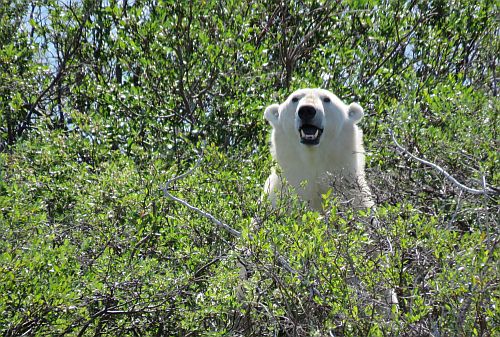
Trying to take an afternoon nap, every now and then this polar bear would poke his head out of the bushes. Although the big, white Tundra Buggy was surely tough to miss, it was almost as if he was reminding us that he knew we were there.
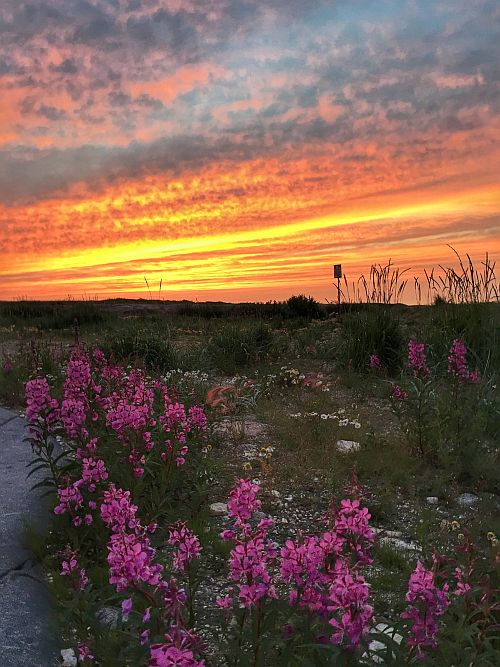
Never wander out alone, but don’t miss the opportunity to see a summer sunset in Churchill.
